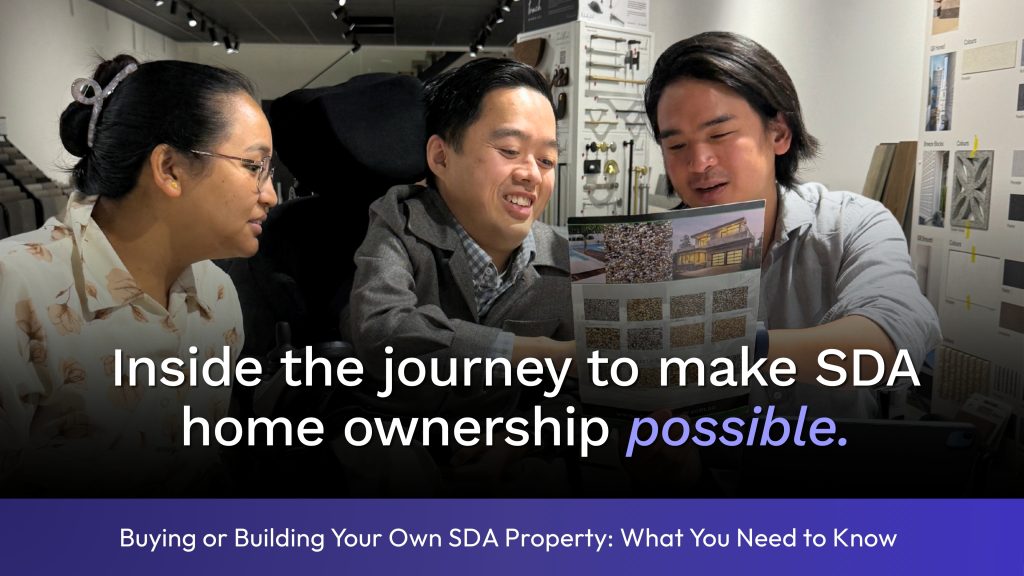For many people with disability and their families, the idea of owning a home designed specifically for their needs feels both empowering and life changing. Thanks to the National Disability Insurance Scheme (NDIS) and the evolution of Specialist Disability Accommodation (SDA), home ownership is no longer an unattainable dream – it is a realistic, achievable pathway. Empowered Housing, the sister company of Empowered Liveability, is proud to support individuals and families to explore, plan, finance, and build their own SDA property from the ground up.
As discussed in Thursday’s Empowered Liveability Webinar on Home Ownership (registrations open via Empowered Liveability’s events page), the journey to owning an SDA home begins long before soil is turned. It starts with understanding the key considerations that shape whether building or buying is the right choice for you.
1. Understanding SDA Funding and Eligibility
Before taking any steps toward home ownership, it’s essential to understand your SDA category – High Physical Support, Fully Accessible, Improved Livability, or Robust. The dwelling you build should align with your approved category and reflect your functional needs. Participants and families should also consider whether the design supports future needs, ensuring the home remains suitable for decades to come.
2. Getting the Right Financial Guidance
Securing finance remains one of the biggest perceived barriers but expert guidance makes a world of difference. At Empowered Housing, participants and their families meet with Goro Gupta, whose deep understanding of SDA lending pathways is invaluable. Goro breaks down the complexities of banking requirements, lending ratios, rental yield considerations, and the financial structures that make SDA home ownership possible. His practical, honest advice ensures families understand exactly what they need in place before approaching lenders.
3. Navigating Design and Build Requirements
Once financing is underway, the next phase focuses on design. SDA builds must meet strict design standards and certification processes, which is where experience matters. Joseph Sulfaro provides expert insight into build requirements from floorplan design to accessibility features, from site selection to compliance. His knowledge ensures your home isn’t just compliant, but functional, beautiful, and future proof.
Alongside Joseph, Nicole Makin-Doherty guides families through the numerous design choices that bring a home to life. From interior finishes to fixtures, smart-home integrations, lighting, and accessibility considerations, Nicole ensures the final outcome is both personalised and practical. Her support helps families balance aesthetic preferences with compliance and everyday usability.
4. Planning for the Long Term
Building or buying SDA is not just a short-term project – it is a life investment. Participants must consider:
• Ongoing property and tenancy management
• Future rental income (if other tenants will be living in the home)
• Long-term maintenance
• Changes in support needs
• Whether family members may later move in
Empowered Housing walks alongside families through each of these considerations, ensuring the entire journey feels informed, supported, and achievable.
To explore SDA home ownership in more depth, or to register for Thursday’s Home Ownership Webinar, visit this link – Meeting Registration – Zoom.
Owning your own SDA home is possible and with the right guidance, it can be one of the most empowering steps you take.

